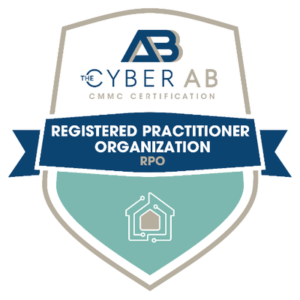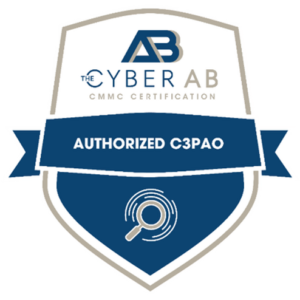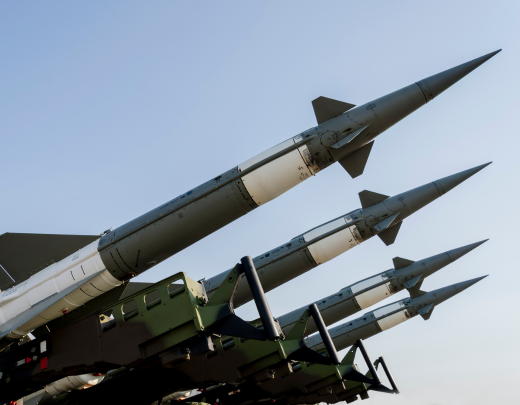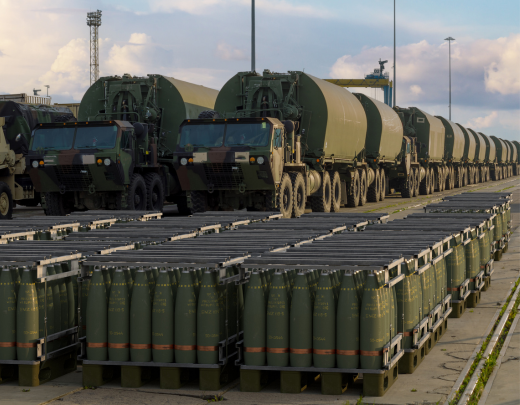Weapons and ammunition manufacturers play a critical role in maintaining national defense readiness. As suppliers of small arms, munitions, and specialized components, these organizations routinely handle Controlled Unclassified Information (CUI), including design data, production specifications, and testing results tied to Department of Defense contracts. Protecting that information is both a contractual obligation and a national security imperative.
Manufacturers often operate with a mix of traditional IT systems and specialized operational technology (OT) used in production lines. These systems may not be centrally managed, creating blind spots in oversight and making it difficult to apply consistent security controls. The disconnect between IT and OT introduces risk and complicates the enforcement of standardized security measures across the facility. Bridging these environments remains one of the most persistent compliance challenges for this sector.
Weapons and ammunition production often involves subcontractors and raw material suppliers. Ensuring that upstream and downstream partners meet cybersecurity requirements is a significant challenge. Weaknesses in supplier security can expose CUI, putting compliance and contract eligibility at risk. Assessors will expect clear documentation of supplier compliance verification.
Manufacturing environments frequently onboard and offboard contractors, temporary workers, and seasonal staff. Without disciplined onboarding and access control processes, former employees or vendors may retain unnecessary system access. These access control gaps can expose sensitive production data and complicate compliance with personnel-related CMMC requirements. Automating these processes is key to sustaining compliance.
Many production facilities rely on older machines or systems not originally designed with cybersecurity in mind. In addition, manufacturers often struggle to clearly define where CUI resides, leading to over-scoping that burdens non-CUI systems with compliance requirements or under-scoping that misses critical systems entirely. Both scenarios create inefficiencies and potential risks during an audit. A well-defined CUI boundary and system inventory are essential first steps to avoid these mistakes.
While many manufacturers have written security policies to satisfy contractual requirements, these often do not align with real-world practices on the shop floor. Assessors immediately recognize discrepancies between documented procedures and actual system behavior. Aligning documentation with operational reality reduces corrective actions during formal assessments.


Separate networks, systems, and users that handle CUI from broader operations, excluding systems that do not touch defense data. For weapons and ammunition manufacturers, this means isolating production data and technical designs from administrative systems such as payroll, HR, or general inventory management. A precise boundary streamlines audits and limits exposure.

Ensure that System Security Plans (SSPs), incident response policies, and access procedures are consistent across both IT and OT environments. In fragmented manufacturing settings, each facility or department may document processes differently. Consolidating and aligning these documents provides auditors with a unified view of your security posture and gives employees clear, actionable guidance.

Consider creating a dedicated, compliant network enclave specifically for handling CUI related to defense contracts. By isolating sensitive production data and communications, manufacturers can simplify monitoring, enforce tighter access controls, and reduce the compliance burden across broader business systems. This approach mirrors best practices already adopted by major defense primes and provides scalability as new DoD contracts with CMMC requirements are awarded.

Internal teams may overlook compliance gaps when balancing daily production demands. An independent readiness review validates internal efforts, highlights unseen risks, and clarifies how CMMC requirements apply across IT and OT systems. A readiness review ensures manufacturers are not caught off guard during a formal assessment.

“Working with Coalfire Federal for our CMMC Level 2 assessment was a thorough and professional experience from start to finish. Their assessment team demonstrated deep expertise in both the technical requirements and the practical implementation of CMMC controls."
Please note that this FAQ is a summary and should be used in conjunction with the official CMMC documentation for precise guidance and compliance instructions.
The Cybersecurity Maturity Model Certification (CMMC) 2.0 requires any organization handling Controlled Unclassified Information (CUI) to meet all 110 practices and 320 control objectives in NIST SP 800-171. This applies not only to prime contractors but also to specialized suppliers and technology partners.
Defense contracts often involve sensitive technical data, schematics, and production methods. CMMC Level 2 certification demonstrates cybersecurity maturity and validates your ability to protect critical defense manufacturing information.
Without CMMC Level 2 certification, weapons and ammunition manufacturers risk losing eligibility for current Department of Defense contracts and will be excluded from bidding on future opportunities. Noncompliance can also jeopardize relationships with prime contractors who expect verifiable cybersecurity from their suppliers.
Manufacturers who delay compliance until contract renewal often face costly remediation and production disruption. Addressing CMMC requirements early allows you to integrate security into daily operations, train staff before handling CUI, and avoid rushed fixes under deadline pressure. Early movers will face fewer bottlenecks as assessor capacity tightens closer to enforcement deadlines. Proactive compliance also strengthens your reputation as a reliable, secure defense partner.
For weapons and ammunition manufacturers, CMMC isn’t just compliance, it’s business-critical. Level 2 certification safeguards sensitive data, ensures DoD contract eligibility, and proves a resilient cybersecurity posture in one of the most targeted defense sectors.